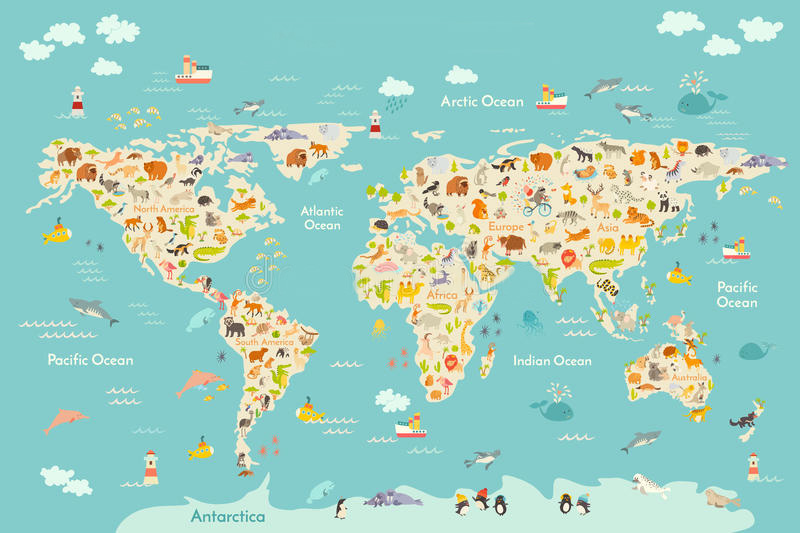Why are boundary disputes among Northeast states so endemic? In August 2021, the entire country was shocked by an explosively violent boundary clash between Assam and Mizoram which left five Assam policemen dead and scores more, including civilians, injured. For the next fortnight, rhetoric flew around even at chief ministerial level making it seem like two countries at war. Although not as cataclysmic, the region has seen several flash points in boundary frictions between different states.
Assam has the highest number of these disputes with its neighbouring states? The answer is the manner states in the region were formed. With the exception of Tripura and Manipur, which were separate princely states during the British days, as well as Sikkim which was a British protectorate, the rest of today’s Northeast states were once part of the then British province of Assam and remained so long after Indian independence.
Nagaland, where a strong violent struggle for sovereignty broke out not long after independence, was the first to be separated from Assam to become a state in 1963 after merging the then Naga Hills district of Assam with Tuensang and Mon subdivision of the then North East Frontier Agency, NEFA – today’s Arunachal Pradesh – as per the recommendation of the Naga People’s Convention, 1957 in a grand effort to resolve the Naga insurrection.
The remaining three Northeast states, Meghalaya, Mizoram and Arunachal Pradesh came to be separated from Assam in 1972, and before this they were autonomous regions within Assam, two of them, Meghalaya and Mizoram, under the Sixth Schedule of the Constitution.
But the modern cartographic exercises and boundary identifying standards employed to demarcate these new states, such as mountain watersheds and baselines, rivers, ravines etc., were expected not to be aways congruent with notions of territory of indigenous communities living where these boundaries came up. For instance, there is nothing which determines communities living in the mountains cannot see the valley below as also their domain, and vice versa. Indeed, the incongruence is between the rather amorphous and elastic traditional indigenous ideas of territory and belonging, and modern notion of territorial boundary.
Lord George Nathaniel Curzon in a way foresaw the current problem in his 1907 Romanes Lecture titled “Frontiers” delivered two years after his retirement as Viceroy of India, saying modern boundaries as Europeans knew it were unknown in the Asiatic world before colonialism arrived.
Very broadly, a traditional non-European nation is marked by a closely administered centre and in concentric circles, a progressive loosening of the nation’s administrative grip till it comes to the frontiers where the administration virtually disappears and becomes the frontiers of another nation. In the European nation-state model, the centre and the borders are administered with equal intensity, and often the borders are guarded and administered more closely than even the centre. No ambiguity is allowed to remain in lands belonging to different nation-states.
It is true even when modern boundaries were still alien to the Northeast indigenous world, conflicts over territory were not entirely unknown. But these conflicts were not as acute for the understanding of territory was more notional than concrete. A community may come to see a certain strip of forest, hillside or lake as their domain, but since there are no hard boundaries to define where the forest or hillside ended, overlaps of notional territorial domains with other indigenous communities were much more tolerated. Moreover, in much of the indigenous world still untouched by modern commerce, territory was more about belonging than possession, therefore the absence of contradiction when same strips of lands occur as part of the heritage of many different tribes.
However, when this notion of “belonging” and attachment to land comes to transform to “possession” in the modern sense, trouble can be foretold. The difference is, while many can have a sense of belonging and love for any particular piece of land, when this attachment comes to be interpreted in terms of “possession”, only one can have it, therefore the frictions. British Economist E. F. Schumacher anticipated such troubles beautifully in his 1973 classic Small is Beautiful, when he sees symptoms of a destructive pathology in terms like “exploit” in defining human relations with earth’s mineral deposits.
Another arena
A contest for ownership of a beautiful but uninhabited high altitude valley, Dzuko, right on the border of Nagaland and Manipur as well for an adjacent strip of forest, referred to as Kezoltsa or Koziirii or Kazing or Dzükou by the different tribes living in its vicinity, Southern Angamis, Mao, Maram and Zeliangrong, is a case in point. The contest is not so much between the two states, though there is a modern boundary drawn using the cartographic standard of river as border, hence officially, a rivulet that runs across the valley is considered the boundary, leaving the valley split between the two states. Communities in the valley’s vicinity however see things differently, and periodic frictions result.
It is now time for the indigenous world to redefine their notion of territory. Take as much of the modern understanding of boundary as it suits administrative efficiency, but also retain those non-conflicting attributes from the traditional notion of land-people relationship to ensure these boundary conflicts are put to rest.
True natural heritages should belong to the entire world. Dzuko should be allowed to be one such too. It cannot be good for the valley or for anybody if it were to be exclusively owned by any one party. The best way forward would be for the valley to be left alone so it can in its isolation, remain beautiful forever. The communities lucky to be born on its laps can then be custodians, not owners of it. They can all reap the harvest of the popularity of the place together by being its joint keepers, without thinking of exploiting and hollowing it out for short term benefits.
First published in The New Indian Express. The original can be read here












